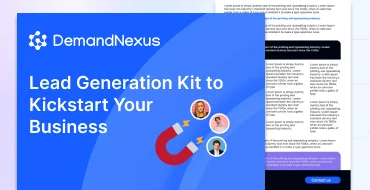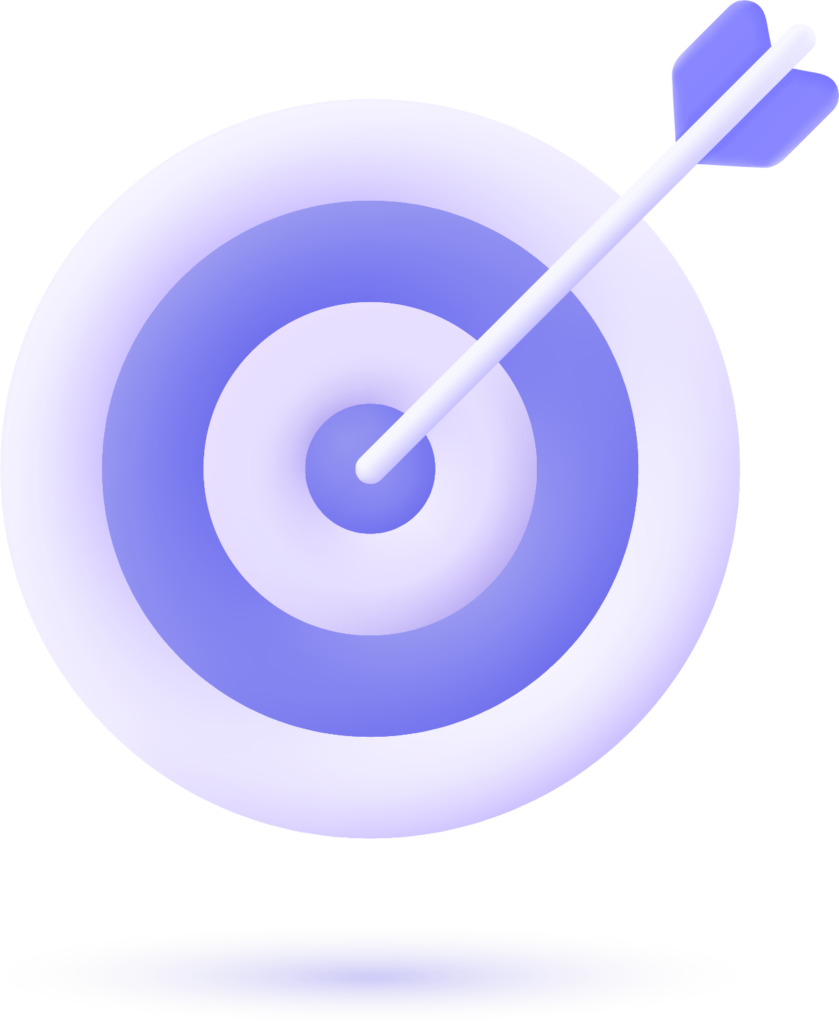What Is a Cold Email Response Rate?
The cold email response rate measures the percentage of recipients who reply to your email. It’s a critical metric indicating prospect interest and campaign effectiveness. To calculate it:
Response Rate = (Number of Replies / Number of Emails Sent) × 100
For example, if you send 200 emails and receive 10 replies, your response rate is 5%. This metric, along with cold email open rates and conversion rates, provides a clear picture of your outreach performance.
At DemandNexus, we help businesses track and optimize these metrics using advanced analytics and automation tools, ensuring your emails resonate with the right audience.
Average Cold Email Response Rates and Benchmarks
So, what is a good cold email response rate? According to industry studies, the average cold email response rate in 2025 ranges from 1% to 5%, though this varies by industry, audience, and strategy. Here’s a breakdown of key cold email stats:
- B2B Cold Email Response Rates: Typically 3%–5%, with sectors like SaaS, consulting, and marketing often seeing higher rates due to networking value.
- Average Cold Email Open Rate: Around 20%–40% for B2B, with 60% considered excellent.
- Average Cold Email Conversion Rate: Ranges from 0.3% to 1% for B2B, reflecting the challenge of turning replies into booked calls or sales.
A good reply rate for cold email is generally 5% or higher, while a good open rate for cold email exceeds 40%. However, top-performing campaigns can achieve response rates of 15%–25% with targeted, personalized outreach.
Factors Affecting Cold Email Response Rates
Several elements influence cold email success rates. Understanding these can help you address gaps and improve performance:
- Email Deliverability: Emails landing in spam or promotions folders reduce visibility. Proper domain warm-up and authentication are crucial.
- Subject Lines: Personalized subject lines boost open rates by up to 50%, while spammy words like “click” can harm rates by 20%.
- Personalization: Emails tailored to the recipient’s needs double reply rates compared to generic messages.
- Targeting: Reaching the wrong audience or irrelevant prospects leads to low engagement.
- Timing: Sending emails at the right time significantly impacts open and reply rates.
Explore our guide on what is cold emailing to learn more about crafting effective outreach.
Best Time to Send Cold Emails for Higher Response Rates
Timing plays a pivotal role in maximizing best time to cold email response rates. Data suggests the following optimal times for B2B outreach:
- Days: Monday and Tuesday yield the highest open rates (around 22%), while Friday is the least effective.
- Hours: Mornings (4 AM–8 AM) and early afternoons (1 PM–4 PM) are ideal, as professionals check emails post-lunch or at the start of the day.
Pro Tip: Align send times with the recipient’s time zone and conduct A/B tests to find the best time to cold email for your audience. Our guide to cold email timing offers deeper insights.

B2B Cold Email Response Rates: Industry Insights
B2B cold email response rates vary by industry and recipient role:
- High-Performing Industries: Museums, nonprofits, and religious institutions see reply rates above 16.5%, while event agencies and design studios have open rates of 47%–48%.
- Lower-Performing Industries: Banking, insurance, and fintech often have open rates below 30% and reply rates as low as 2.2%.
- Recipient Roles: C-level executives respond at 6.4%, compared to 5.2% for non-C-suite employees. Managers and leads have a 3.45% reply rate.
These B2B cold email open rates and reply rates highlight the importance of targeting the right audience with relevant messaging.
11 Proven Tips to Boost Cold Email Response Rates
To surpass the average reply rate for cold email, implement these strategies:
- Use a Company Email Address: Emails from professional domains (e.g., name@company.com) build trust and improve deliverability, according to HubSpot’s email marketing insights.
- Craft Compelling Subject Lines: Personalize with the recipient’s name or company (e.g., “[Company Name], Boost Your ROI by 20%”) to increase open rates by 22%, as noted by Campaign Monitor.
- Add a Preheader: A concise preheader summarizing the email’s value can boost open rates by 10%, per Litmus.
- Personalize Beyond Names: Reference recent achievements, pain points, or industry trends to show relevance, a tactic endorsed by Salesforce.
- Keep Emails Short: Emails of 50–125 words achieve reply rates up to 50%, according to Boomerang.
- Include a Clear CTA: One specific call-to-action (e.g., “Book a 15-minute call”) maximizes responses, as highlighted by Mailchimp.
- Use Emojis Sparingly: Emojis in subject lines can increase open rates by 8%, but avoid overuse, per GetResponse.
- Warm Up Your Domain: Gradually increase sending volume to avoid spam filters. See our email warm-up guide.
- Send Strategic Follow-Ups: Sequences with 4–7 emails triple reply rates compared to 1–3 emails. Space follow-ups 3–5 days apart, as recommended by Woodpecker.
- Optimize for Mobile: With 41.6% of emails opened on mobile, use responsive designs and concise copy, per SuperOffice.
- A/B Test Everything: Test subject lines, send times, and CTAs to identify what drives the highest engagement, a best practice from ActiveCampaign.
DemandNexus’s cold email platform simplifies these strategies with features like hyper-personalization, automated follow-ups, and A/B testing, helping you achieve B2B cold email conversion rates that outperform industry benchmarks.
Cold Email Conversion Rates: From Replies to Results
The average cold email conversion rate (e.g., booking a call or closing a sale) is low, often 0.3%–1% for B2B. To improve cold email conversion rates:
- Craft Clear CTAs: Specific CTAs like “Schedule a 15-minute demo” increase booking rates, per Crazy Egg.
- Target the Right Audience: Use a well-defined Ideal Customer Profile (ICP) to ensure relevance, as outlined in our ICP guide.
- Leverage Multi-Channel Outreach: Combine emails with LinkedIn messages or calls for a 37% higher response rate, according to Rainmaker.
Explore our B2B sales cadence guide for tips on multi-channel strategies.
Cold Email Open Rate Benchmarks
The cold email open rate benchmark varies, but 20%–40% is typical for B2B, with 60% indicating exceptional performance. To achieve a good cold email open rate:
- Personalize Subject Lines: Using the company name increases open rates by 15%.
- Avoid Spam Triggers: Words like “free” or “urgent” can reduce open rates by 20%.
- Use Numbers or Questions: Subject lines with numbers see a 45% higher open rate, and questions boost opens by 10%.
Check out our cold email templates for subject line inspiration.
Cold Email Agency Pricing: What to Expect
Hiring a cold email agency can streamline outreach but comes with costs. Cold email agency pricing varies based on services:
- Basic Services: $500–$2,000/month for list building, email setup, and basic campaigns.
- Full-Service Campaigns: $3,000–$10,000/month for strategy, copywriting, automation, and analytics.
- Enterprise Solutions: $10,000+/month for high-volume, multi-channel outreach.
Agencies often promise higher B2B cold email open rates and response rates, but success depends on their expertise and your target audience. For a cost-effective alternative, DemandNexus’s platform offers agency-level features at a fraction of the price.
Conclusion: Elevate Your Cold Email Performance
Achieving above-average cold email response rates requires a blend of personalization, strategic timing, and data-driven optimization. By targeting the right audience, crafting compelling emails, and leveraging follow-ups, you can surpass the average cold email open rate of 20%–40% and response rate of 1%–5%. Use A/B testing and analytics to refine your approach and drive meaningful conversations.
Ready to boost your B2B cold email conversion rates? With DemandNexus, you can automate personalized campaigns, track performance, and optimize outreach to generate more leads and close deals faster.



